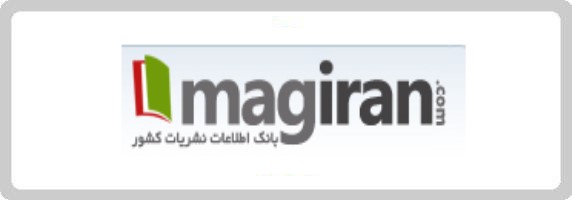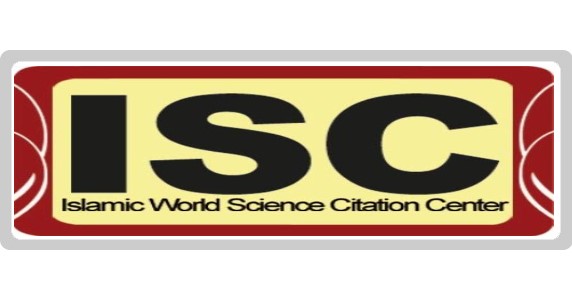تعیین رابطه بین اطلاعات جمعیتشناختی کودکان و والدین در ساخت هویت فرهنگی کودک (مطالعه موردی: کودکان شهرستان اوز)
کلمات کلیدی:
اطلاعات جمعیتشناختی, هویت فرهنگی, کودکان, والدینچکیده
هدف: هویت فرهنگی هر جامعه به باورها، آداب و رسوم جمعی یک فرهنگ، ملت، قوم یا گروه اشاره دارد. بررسی عوامل مرتبط با ساخت هویت فرهنگی کودک میتواند به طراحی و اجرای برنامههایی برای بهبود هویت فرهنگی آنان کمک نماید. در نتیجه، پژوهش حاضر با هدف تعیین رابطه بین اطلاعات جمعیتشناختی کودکان و والدین در ساخت هویت فرهنگی کودک انجام شد.
روششناسی: پژوهش حاضر توصیفی از نوع همبستگی بود. جامعه پژوهش 4353 نفر از کودکان دختر و پسر مقطع ابتدایی شهرستان اوز بودند که 345 نفر از آنها با روش نمونهگیری هدفمند بهعنوان نمونه انتخاب شدند. ابزارهای پژوهش حاضر شامل فرم اطلاعات جمعیتشناختی (شامل تحصیلات والدین، اشتغال والدین، تعداد فرزند، درآمد خانواده، سن و جنسیت) و پرسشنامه محققساخته هویت فرهنگی کودک بودند. دادههای پژوهش حاضر با روشهای تحلیل واریانس یک طرفه، ضریب همبستگی پیرسون و آزمون تی مستقل در نرمافزار SPSS تحلیل شدند.
یافتهها: یافتههای این پژوهش نشان داد که تفاوت بین میزان هویت فرهنگی کودکان بر اساس تحصیلات والدین آنها معنادار بود و هویت فرهنگی کودکان دارای پدران و مادران با تحصیلات بالاتر، بیشتر بود (001/0P<). تفاوت بین میزان هویت فرهنگی کودکان بر اساس اشتغال والدین آنها معنادار بود و هویت فرهنگی کودکان دارای پدران و مادران با شغل دولتی، بیشتر بود (05/0P<). افزون بر آن، تفاوت بین میزان هویت فرهنگی کودکان بر اساس تعداد فرزندان معنادار بود و هویت فرهنگی کودکان تک فرزند بیشتر بود (001/0P<). تفاوت بین میزان هویت فرهنگی کودکان بر اساس میزان درآمد خانواده معنادار بود و هویت فرهنگی کودکان دارای درآمد خانواده بالاتر، بیشتر بود (001/0P<). همچنین، بین هویت فرهنگی کودک و سن کودکان رابطه مثبت و معنادار وجود داشت (01/0P<). علاوه بر آن، تفاوت بین میزان هویت فرهنگی کودکان بر اساس جنسیت کودکان معنادار نبود و هویت فرهنگی کودکان دختر و پسر تقریباً برابر بود (05/0P>).
نتیجهگیری: نتایج این پژوهش نشان داد که بین میزان هویت فرهنگی کودکان بر اساس متغیرهای جمعیتشناختی تحصیلات والدین، اشتغال والدین، تعداد فرزند، درآمد خانواده و سن تفاوت وجود داشت، اما بین میزان هویت فرهنگی کودکان بر اساس متغیر جمعیتشناختی جنسیت تفاوتی وجود نداشت. در نتیجه، طراحی و اجرای برنامههایی جهت بهبود و ارتقای هویت فرهنگی کودکان از طریق بهبود اطلاعات جمعیتشناختی موثری ضروری میباشد.
دانلودها
مراجع
Azizpouran, Z., & Moradi, A. (2021). Sociological explanation of the relationship between cultural identity and cultural consumption (young women of Shahinshahr). Scientific Quarterly Journal of Sociology of Culture and Art, 3(4), 110-136. [DOI]
Butler, J. V., & Fehr, D. (2024). The causal effect of cultural identity on cooperation. Journal of Economic Behavior & Organization, 221, 134-147. [DOI]
Eskandari, H., & Shokra’I, Z. (2004). Examination and comparison of identity positions between female and male university students. Women’s Studies Sociological and Psychological, 2(5), 87-110. [DOI]
Fathi, M. R., Kiamanesh, A. R., & Jomehri, F. (2018). The role of human agency, gender and age in identity characteristics: Arnett's emerging adulthood. Journal of Developmental Psychology: Iranian Psychologists, 15(57), 33-44. [URL]
Foroutan, Y. (2012). Socio-demographic study of the association between identity and migration. National Studies Journal, 13(2), 73-96. [URL]
Geppert, J., McCoy, M. (2024). Protective effect of prenatal Minnesota WIC participation on increasing trends of low birth weight by race, ethnicity and cultural identity. Journal of the Academy of Nutrition and Dietetics, 124(10), 100. [DOI]
Ghadami, M., Roosta, N., Keshavarzafshar, H., & Ahghar, Gh. (2021). Comparison of the effectiveness of group counseling with Gestalt therapy and reality therapy approach on the identity styles of female high school students in Tehran. Sociology of Education, 7(1), 121-132. [DOI]
Ghorbani, A., & Yazarloo, S. (2021). Structural equation modeling identity styles and self-efficacy with the attitude to crime in students. Sociology of Education, 7(1), 1-14. [DOI]
Jahanshahi, R., Haghighatian, M., & Bahian, Sh. (2024). Sociologically investigating the impact of cultural factors on the national identity reproduction in students. Sociology of Education, 10(1), 183-192. [DOI]
Jia, F., & Krettenauer, T. (2022). Moral identity and acculturation process among Chinese Canadians: Three cultural comparisons. International Journal of Intercultural Relations, 88, 125-132. [DOI]
Ma, J., Hong, J. H., Yoo, B., & Yang, J. (2021). The effect of religious commitment and global identity on purchase intention of luxury fashion products: A cross-cultural study. Journal of Business Research, 137, 244-254. [DOI]
Meca, A., Allison, K., Cruz, B., Wright, A., Gonzales-Backen, M., & Scury, M. (2023). Cultural identity development among ethnic-racial minorities: An examination of ethnic-racial identity, national identity, and biculturalism. Encyclopedia of Child and Adolescent Health, 2, 79-92. [DOI]
Mosanya, M., & Kwiatkowska, A. (2021). Complex but integrated: Exploring social and cultural identities of women third culture kids (TCK) and factors predicting life satisfaction. International Journal of Intercultural Relations, 84, 65-78. [DOI]
Mozaffari, N., Fathabadi, J., & Bagherian, F. (2009). Relationship between identity status and locus of control with gender, grade and field among high schools students. Journal of Applied Psychology, 3(2), 66-81. [DOR]
Oladhamzehzadeh, A., Oladiyan, M., & Safari, M. (2024). Identifying and ranking the affecting factors on development of identity in elementary school students with an Iranian-Islamic approach based on the fuzzy Vikor. Sociology of Education, 10(3), 376-388. [DOI]
Stanley, M., Taylor, M. K., & Marsh, E. J. (2021). Cultural identity changes the accessibility of knowledge. Journal of Applied Research in Memory and Cognition, 10(1), 44-54. [DOI]
Wilby, K. J. (2022). The unexpected intersection of personal and professional identities: Reflections from cultural safety teaching for LGBTAQI+ health. Currents in Pharmacy Teaching and Learning, 14(1), 106-109. [DOI]
Yarmohamadian, A., Akbari, M., Ghamarani, A., & Moradi, S. (2017). The role of identity elements, basic psychological needs and demographic variables in predicting psychological well-being of students with physical and motor disabilities. Psychology of Exceptional Individuals, 7(26), 109-125. [DOI]
Zhao, M., Ang, L. H., Toh, F. H. C. (2022). Hybridising the cultural identity of Mulan from a Chinese ballad to American films. Asian Journal of Social Science, 50(2), 130-136. [DOI]
دانلود
چاپ شده
ارسال
بازنگری
پذیرش
شماره
نوع مقاله
مجوز
حق نشر 2025 فتحیه فتحی (نویسنده); رضا اسماعیلی; شاپور بهیان (نویسنده)

این پروژه تحت مجوز بین المللی Creative Commons Attribution-NonCommercial 4.0 می باشد.










